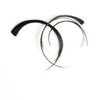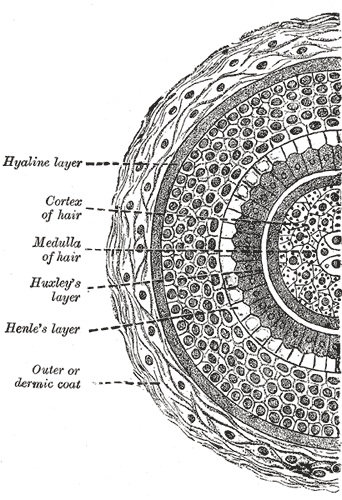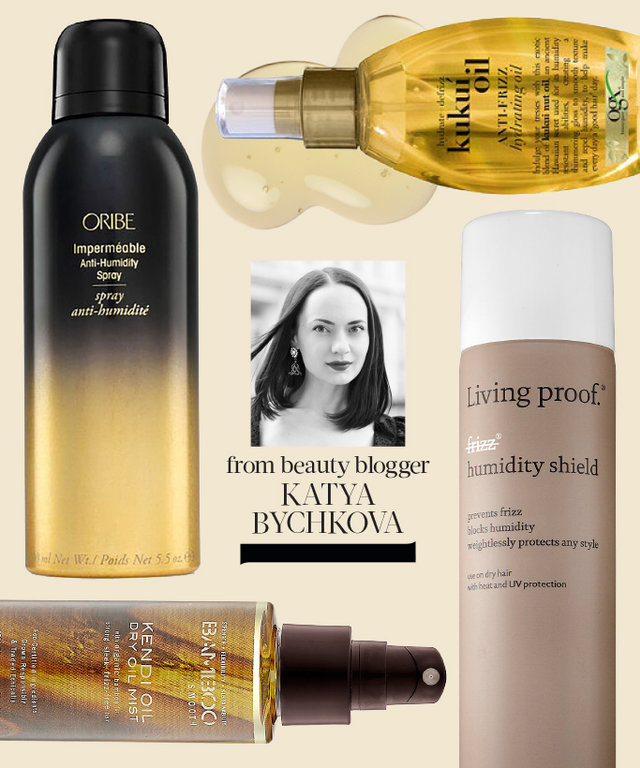|
8/31/2016 Why Is Your Hair Not Growing?Break These Bad Habits ASAP
By Del Sandeen Does it seem as if your hair isn't growing? Well, most likely, it is (if it truly isn't, there may be an underlying health reason, in which case you should consult a doctor). But if your hair breaks off at an equal or higher rate than it grows, you'll never see any length gains. Hair may show stagnant or negative growth rates for a number of reasons. Do any of these sound familiar to you? Because if they do, it's imperative to break these bad hair habits and begin promoting healthy practices that allow you to keep every inch of growth possible. 1. Chemical Overprocessing Overlapping relaxers, aggressive bleaching and applying too many chemicals to tresses are all prime culprits in damage to black hair (all hair types, actually). Damaged hair will still grow from the scalp, but it often breaks off at the ends or requires a drastic cut to get rid of unhealthy sections. Ask yourself if you:
If you answered yes to any of these, it's possible that your hair is overprocessed. Although stylists aren't always foolproof, it's usually better to receive chemical services in a salon at the hands of a capable professional. 2. Trimming Too Often You can have too much of a good thing, and trims fall into this category if you want longer hair. Many women resort to trimming their own hair at home after suffering the results of a scissor-happy stylist. Healthy hair doesn't require as many trims as unhealthy tresses; the less you do to your hair, the less likely you'll need frequent trims that take off an inch or more. Hair grows an average of 1/4 to 1/2 inch per month, so if you care for your hair properly, you don't need to cut more than 1/2 inch every few months or so if you want to see growth. 3. Lack of Conditioning Dry, brittle hair can happen to anyone if she's not diligent about conditioning. Black hair (basically curly hair) often craves moisture, even natural locks. If you're not currently:
you may need to start. It's very difficult to over-condition black hair (or curly hair), so the more moisturizing products and practices you use, the better conditioned -- and less likely to break -- your tresses will be. 4. Poor Protein Structure Along with a good moisture level, hair needs a suitable protein balance to remain strong. The more chemicals or harsh practices that your mane goes through, the more important protein becomes, simply because every relaxer/touch-up, color and even flat iron press compromises the strength of your strands' cuticles. Weak hair usually breaks, after becoming thinner and less elastic over time. Because hair is comprised of protein, it needs protein in some form or other. As long as you follow a healthy regimen, you won't need as much protein as someone who doesn't, but a little protein helps most women maintain strong tresses. 5. Traction Alopecia Tight styles, particularly ones that pull at the hairline, can do serious damage; in some cases, this damage is permanent, killing follicles forever. If your hairline is sparse, this condition may unfortunately be irreversible. Braids that are too tight, ponytails that pull, suffocating weaves and more are all styles that need to be abandoned. In many cases, a mindset is what needs to change at the same time the style changes. Sleek, straight hair that's pulled within an inch of its life may look good, but healthy hair is about so much more than appearance. It may be time to reexamine your usual hairdos if you realize they're often too tight for your own good. 8/26/2016 Baby Hair-Care BasicsThe mysteries of infant hair explained, plus how to keep it healthy
By Maria Livingstone Like so many things baby-related, newborn hair (or lack thereof) is unpredictable. Whether your baby's bald or bushy depends upon a mix of genetics, ethnicity, and hormones. But no matter how hirsute your tot is, try not to get too attached to the look. Their hair will likely change during the first year. Check out how: Hair today, gone tomorrow. If your baby was born with hair, they'll probably start to shed it during the first six months, thanks to hormonal changes. That hair loss peaks when infants are around 3 to 4 months old, says Dan Brennan, M.D., a pediatrician in Santa Barbara, CA, and a dad of two. And it can be quite dramatic (a hairy kid can turn into a bald one) or more subtle, especially when your infant's new hair grows in simultaneously. Seeing spots. Another reason for your baby's thinning locks? Since a younger baby will spend a lot of time on his back, the friction of their head against the crib mattress and the car seat tends to produce a bald spot, especially in the back of the head, says Dr. Brennan. If you notice that your baby favors one side when they’re lying down, try changing their position so that their head doesn't go bald and flatten there, too. Their bald spots will disappear when they are a bit older and starts to spend more time upright. Who's that kid? Once all their new hair grows in (sometimes as early as 6 months, sometimes as late as toddlerhood), it may have a completely different texture or color, or both. Hair-Care Basics However your baby's hair looks when it grows in, it will be finer-and more fragile-than yours, so follow these tress tips to prevent it from getting too dry or damaged: Wash as needed Babies under 6 months produce less oil on their scalps, so there's no need to shampoo more than two times a week - and just once a week if your baby is African-American, says Erica Harris, a stylist and owner of Joi Salon and Spa Escape, in Boston. Once your child is older - and more likely to rub bananas in her hair - you may want to shampoo it more often. African-American babies should stick with the once-a-week shampoo routine, though you can rinse it every night with water and conditioner. No matter how many times you wash your baby's hair, try to use hypoallergenic, fragrance-free products, says Dr. Brennan. Tame tangles A good trick for preventing knots if your baby has a lot of hair or tight curls: Use a baby-friendly conditioner after shampooing and rinse out only about 75 percent of it, Harris suggests. Use a spray detangler for sparser hair (leaving in conditioner can make fine hair look greasy), and spritz just the ends, not the scalp. To coax out a stubborn tangle, hold a chunk of the hair between the scalp and the knot, spray it, and gently comb through. Style safely Keep an eye on any clips or hair accessories your baby's wearing; they may pose a choking hazard if they slip off (so what's okay for church when your babe is on your lap may not be safe for your sister's wedding, when she's bouncing between aunts and grandmas). Since infant hair can break easily, avoid pulling your daughter's hair into a super tight ponytail until she's a toddler, recommends Harris (not that she'd let you anyway!). (source) Here's another nice article I found Question: "I thought all babies were born bald, but my newborn has so much hair it sticks straight up from her head like a Mohawk! Will it look normal soon? And how do I take care of all that baby hair?" As you’ve discovered, not all newborns are born bald but arrive on the scene with a shock of thick hair. While some of these babies come out with perfectly coiffed locks, the rest look like they’re having a bad hair day, with a punk-style Mohawk, or tufted patches, or the scraggly comb-over of a little Homer Simpson. No one really knows why some babies are born with lots of hair, though experts believe it probably has something to do with maternal hormones and the genetic lottery. Whatever your baby’s hairstyle du jour, don’t worry too much (or get too attached). Newborn dos are hair today, gone tomorrow. Here’s what you need to know about your newborn’s hair: Newborn hair loss. If you were surprised by your baby’s massive mane, just wait: All that hair may disappear. Newborns shed like a golden retriever in the first six months (and some can go from luxuriantly coiffed to bald as a cue ball). That’s because all those pregnancy hormones (the ones that may have given you great hair, too!) plummet after birth, so your baby’s hair stops growing. Then a phase called “telogen” kicks in, when lots of the hair falls out altogether. Newborn hair growth. Luckily, the telogen phase is usually followed rather quickly (or even simultaneously) by new hair growth. But the baby hair that grows in may be nothing like your little one’s newborn locks. Color and texture often change — again, thanks to hormones — so your baby’s thick, dark hair could make its reappearance a lot sparser and lighter. Red can give way to blonde. Curly goes straight. You never know. Eventually your baby’s hair will grow in and she’ll look less like a punk rocker and more like the coiffed baby of your dreams. Exactly when that happens can be anyone’s guess (it’s different for every child). Some get a great new head of hair by six months, some not for two or three years. Until then, here’s how to take care of whatever hair your baby does have:
For now, Mom, cut off a lock of that soft Mohawk to tuck in the baby book, and enjoy the punk look while it lasts. Your newborn’s hair will look different soon enough. Here’s to your baby’s lovely locks — now and later! 8/23/2016 0 Comments Why Humidity Makes Your Hair CurlHumid air causes hydrogen bonds to form between water molecules and the proteins in your hair, triggering curls and frizz By Joseph Stromberg - smithsonian.com If you have long hair, you probably don’t need to look up a weather report to get an idea of how much humidity’s in the air: You can simply grab a fistful of hair and see how it feels. Human hair is extremely sensitive to humidity—so much that some hygrometers (devices that indicate humidity) use a hair as the measuring mechanism, because it changes in length based on the amount of moisture in the air. Straight hair goes wavy. If you have curly hair, humidity turns it frizzy or even curlier. Taming the frizz has become a mega industry, with different hair smoothing serums promising to “transform” and nourish hair “without weighing hair down.” But just why does humidity have this strange effect on human hair? Hair’s chemical structure, it turns out, makes it unusually susceptible to changes in the amount of hydrogen present in the air, which is directly linked to humidity. Most of a hair’s bulk is made up of bundles of long keratin proteins, represented as the middle layer of black dots tightly packed together in the cross-section below. Bundles of keratin proteins (the middle layer of black dots above) are susceptible to changing shape on a humid day. Image from Gray’s Anatomy
These keratin proteins can be chemically bonded together in two different ways. Molecules on neighboring keratin strands can form a disulfide bond, in which two sulfur atoms are covalently bonded together. This type of bond is permanent—it’s responsible for the hair’s strength—and isn’t affected by the level of humidity in the air. But the other type of connection that can form between adjacent keratin proteins, a hydrogen bond, is much weaker and temporary, with hydrogen bonds breaking and new ones forming each time your hair gets wet and dries again. (This is the reason why, if your hair dries in one shape, it tends to remain in roughly that same shape over time.) Hydrogen bonds occur when molecules on neighboring keratin strands each form a weak attraction with the same water molecule, thereby indirectly bonding the two keratin proteins together. Because humid air has much higher numbers of water molecules than dry air, a given strand of hair can form much higher numbers of hydrogen bonds on a humid day. When many such bonds are formed between the keratin proteins in a strand of hair, it causes the hair to fold back on itself at the molecular level at a greater rate. On the macro level, this means that naturally curly hair as a whole becomes curlier or frizzier due to humidity. As an analogy, imagine the metal coil of a spring. If you straighten and dry your hair, it’ll be like the metal spring, completely straightened out into a rod. But if it’s a humid day, and your hair is prone to curling, water molecules will steadily be absorbed and incorporated into hydrogen bonds, inevitably pulling the metal rod back into a coiled shape. I've said it many, many times. You need to have a great go-to anti-frizz product on hand (and in your purse) at all times. Especially you curlies. And especially during the more hot and humid months of summer. This blogger tested a dozen popular brands and narrowed it down to the top five that should satisfy the needs of you who are struggling with frizzy hair.
|
Hair by BrianMy name is Brian and I help people confidently take on the world. CategoriesAll Advice Announcement Awards Balayage Barbering Beach Waves Beauty News Book Now Brazilian Treatment Clients Cool Facts COVID 19 Health COVID 19 Update Curlies EGift Card Films Follically Challenged Gossip Grooming Hair Care Haircolor Haircut Hair Facts Hair History Hair Loss Hair Styling Hair Tips Hair Tools Health Health And Safety Healthy Hair Highlights Holidays Humor Mens Hair Men's Long Hair Newsletter Ombre Policies Procedures Press Release Previous Blog Privacy Policy Product Knowledge Product Reviews Promotions Read Your Labels Recommendations Reviews Scalp Health Science Services Smoothing Treatments Social Media Summer Hair Tips Textured Hair Thinning Hair Travel Tips Trending Wellness Womens Hair Archives
January 2025
|
|
Hey...
Your Mom Called! Book today! |
Sunday: 11am-5pm
Monday: 11am-6pm Tuesday: 10am - 6pm Wednesday: 10am - 6pm Thursday: By Appointment Friday: By Appointment Saturday: By Appointment |







 RSS Feed
RSS Feed